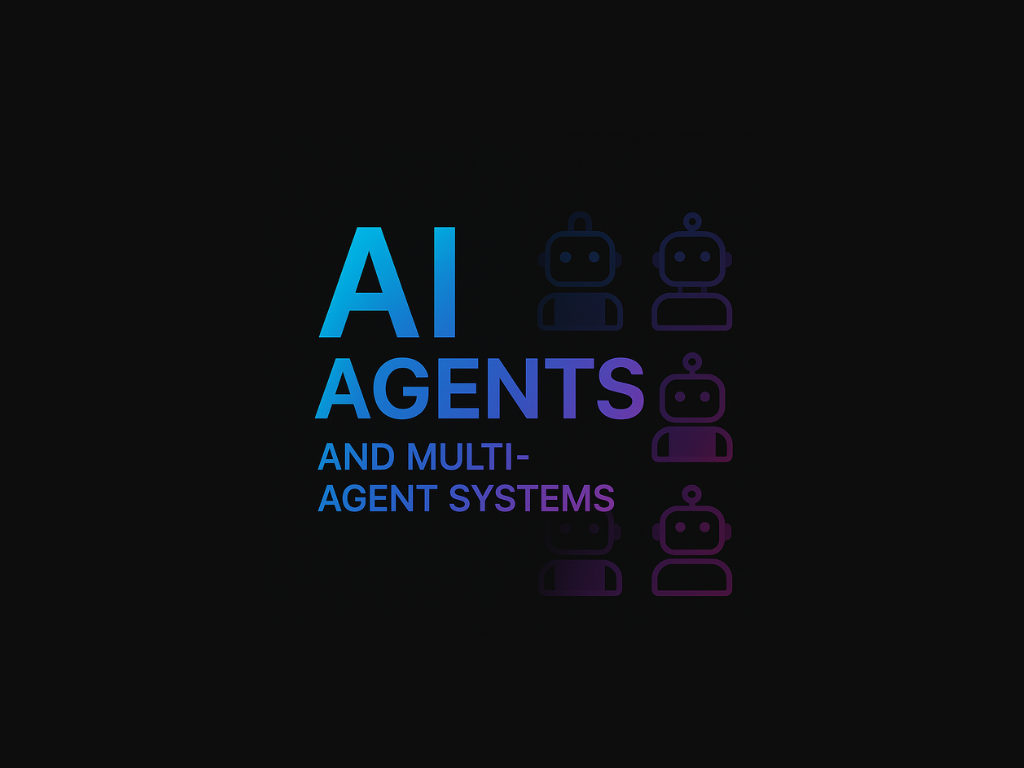AI Agents & Multi-Agent Systems: Transforming How Work Gets Done

AI agents and multi-agent systems have rapidly evolved from experimental concepts to transformative technologies that are fundamentally changing how work gets done across industries. These autonomous digital entities are now handling complex tasks, collaborating with humans, and even working together to solve problems that would challenge individual systems.
The Rise of AI Agents
AI agents—autonomous systems that can perceive their environment, make decisions, and take actions to achieve specific goals—have matured dramatically in the past two years. Unlike traditional AI models that passively respond to inputs, agents actively engage with their environment and users to complete tasks with minimal supervision.
Key capabilities of modern AI agents include:
Autonomous decision-making based on objectives and constraints
Adaptive behavior in response to changing conditions
Learning from experience and improving performance over time
Managing complex, multi-step processes from start to finish
Handling ambiguity and unexpected situations gracefully
Multi-Agent Systems: The Power of Collaboration
While individual AI agents are impressive, the true revolution is happening with multi-agent systems—networks of specialized agents that collaborate to tackle complex tasks. These systems distribute work according to each agent's strengths, creating emergent capabilities that exceed what any single agent could achieve.
The architecture of multi-agent systems typically includes:
Specialized agents with distinct roles and capabilities
Coordination mechanisms for task allocation and conflict resolution
Communication protocols for sharing information and results
Oversight mechanisms to ensure system-wide goals are met
Adaptive resource allocation based on real-time needs
Real-World Impact Across Industries
Enterprise Operations
Multi-agent systems are transforming enterprise operations by:
Automating end-to-end business processes with minimal human intervention
Coordinating activities across departments and systems
Identifying optimization opportunities that humans might miss
Handling exceptions and edge cases with increasing sophistication
Scaling operations dynamically based on demand
Software Development
In development environments, AI agents are now:
Writing, testing, and debugging code collaboratively
Managing code reviews and quality assurance
Handling deployment and monitoring with minimal oversight
Generating documentation and knowledge sharing materials
Assisting with architectural decisions and refactoring
Research and Innovation
Multi-agent systems are accelerating research by:
Exploring vast solution spaces in parallel
Generating and testing hypotheses systematically
Analyzing literature and identifying connections across disciplines
Designing and simulating experiments autonomously
Validating findings and identifying potential errors
Enabling Technologies
Several key technologies have converged to make advanced agent systems possible:
Foundation Models as Building Blocks
Large language models and multimodal foundation models serve as the cognitive backbone for agents, providing:
Sophisticated reasoning and problem-solving capabilities
Natural language understanding and generation
Knowledge integration across domains
Adaptability to novel situations and requirements
Agent Frameworks and Orchestration
Specialized frameworks have emerged to support agent development and coordination:
Open-source agent frameworks like AutoGPT, BabyAGI, and LangChain
Enterprise-grade orchestration platforms from major AI providers
Domain-specific agent libraries for finance, healthcare, and other sectors
Integration capabilities with existing software ecosystems
Tool and API Integration
Agents have become dramatically more capable through:
Standardized interfaces for accessing external tools and services
Ability to control software applications through UIs or APIs
Secure access to enterprise systems and data sources
Automated discovery and adaptation to available tools
Human-Agent Collaboration
Rather than replacing humans, the most successful implementations focus on collaboration:
Agents handling routine aspects while humans focus on creative and strategic work
Humans providing guidance and intervention for complex decisions
Transparent workflows that make agent reasoning visible and adjustable
Continuous learning from human feedback and preferences
Adaptive autonomy that shifts based on task complexity and risk
Challenges and Considerations
Despite rapid progress, several challenges remain:
Security and governance for autonomous systems
Accountability and explainability of agent decisions
Managing the complexity of large agent ecosystems
Ensuring ethical operation across diverse contexts
Balancing automation with meaningful human involvement
Getting Started with AI Agents
Organizations looking to implement agent systems should consider:
Starting with well-defined, bounded use cases
Implementing strong monitoring and oversight mechanisms
Focusing on human-agent collaboration rather than full automation
Developing metrics to measure and validate agent performance
Creating clear protocols for handling exceptions and escalations
Conclusion
AI agents and multi-agent systems represent a fundamental shift in how we approach work and problem-solving. By delegating increasingly sophisticated tasks to autonomous systems, organizations can achieve new levels of efficiency, innovation, and scale. As these technologies continue to mature, we can expect them to become integral components of virtually every industry and knowledge domain.
The companies that successfully integrate agent systems into their operations today will gain significant competitive advantages in terms of productivity, adaptability, and innovation capacity. The age of autonomous AI agents is no longer on the horizon—it has arrived, and it's transforming how work gets done.